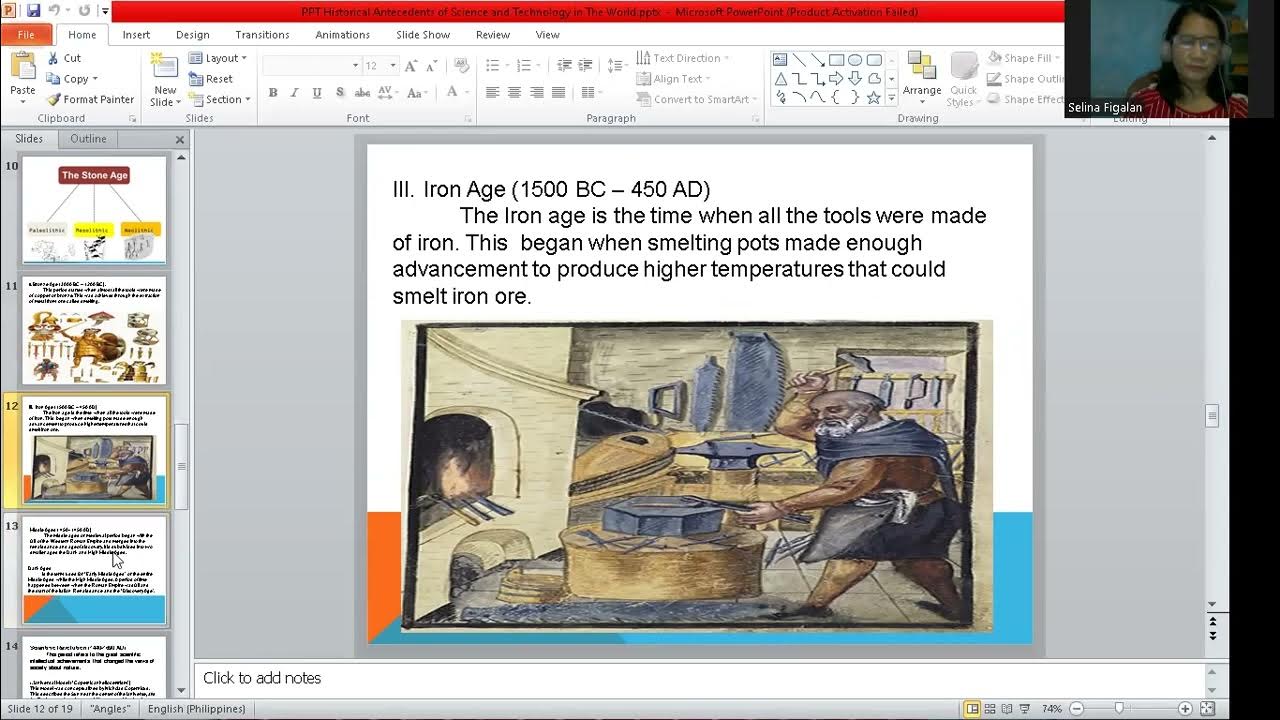Belajar Sejarah - Zaman Praaksara Arkeologi #BelajarDiRumah
Summary
TLDRThis video script explores the prehistoric eras in Indonesia, divided into the Stone, Bronze, and Iron Ages. It details the progression from the primitive tools of the Paleolithic to the sophisticated metallurgy of the Iron Age. The script describes how early humans transitioned from nomadic lifestyles to settled agriculture, with a focus on significant cultural artifacts and practices like the Megalithic structures and metalwork, offering insights into the ancient way of life.
Takeaways
- 🪨 The 21st century offers immense convenience through technology, but it's crucial to reflect on how humans lived centuries or even millions of years ago.
- 🕰️ The prehistory era can be divided into different periods based on geology, artifacts, and history, such as the Stone Age, Bronze Age, and Iron Age.
- 🪓 The Stone Age in Indonesia is categorized into four periods: Paleolithic, Mesolithic, Neolithic, and Megalithic, based on archaeological findings.
- 👣 The Paleolithic era was marked by the use of simple, rough stone tools, nomadic hunting, and gathering, with early humans living in small groups and using fire.
- 🦴 In the Paleolithic era, two key cultural regions existed in Indonesia: the Pacitan culture, known for its hand axes, and the Ngandong culture, known for tools made from bone and antlers.
- 🏞️ The Mesolithic period saw humans starting to settle semi-permanently, with notable cultures like the Kjokkenmoddinger (kitchen midden) and Abris sous roche (rock shelters).
- 🎨 The Neolithic era brought advancements in farming, polished stone tools, and iconic artifacts like oval axes and pottery, with evidence of early clothing production from tree bark.
- 🔨 The Megalithic era, spanning from the Neolithic to the Bronze Age, introduced monumental structures for religious and burial purposes, such as menhirs and dolmens.
- 🥁 The Bronze Age in Indonesia is notable for the creation of bronze tools and artifacts like axes, drums (nekara), and small bronze figures.
- 🪛 The Iron Age marked the introduction of iron smelting, leading to more sophisticated tools such as knives, sickles, and arrowheads.
Q & A
What is the 'Three-age system' proposed by Thompson?
-The 'Three-age system' proposed by Thompson divides prehistoric periods based on archaeological findings into the Stone Age, Bronze Age, and Iron Age.
How did Indonesian historian R. Soekmono adapt the 'Three-age system' for Indonesia?
-R. Soekmono adapted the 'Three-age system' by dividing Indonesia's prehistoric periods into two main ages: the Stone Age and the Metal Age.
What distinguishes the Paleolithic era from other periods of the Stone Age?
-The Paleolithic era, or Old Stone Age, is characterized by crude, simple stone tools used by early humans, who lived as nomadic hunter-gatherers and sought shelter in caves.
What are the key characteristics of the Mesolithic era in Indonesia?
-In the Mesolithic era, early humans lived semi-nomadically, utilizing tools like the pebble and hachecourt. The period is notable for the Kjokkenmoddinger (kitchen midden) and Abris sous roche (rock shelters).
What were the primary human activities during the Neolithic era?
-During the Neolithic era, humans began to settle and engage in agriculture. They produced food through farming and used more refined tools such as the square axe and oval axe.
What was the significance of the Megalithic era?
-The Megalithic era was marked by the construction of large stone structures, such as menhirs and dolmens, for religious rituals and burials, reflecting the development of complex social and religious practices.
What was the transition from the Stone Age to the Metal Age in Indonesia?
-The transition occurred when humans began using metal to create tools and artifacts. This started with the Bronze Age, where tools were made of bronze, and eventually led to the Iron Age, where more advanced tools were made from iron.
Why is the Copper Age not considered a separate period in Indonesia?
-The Copper Age is not considered a distinct period in Indonesia because no significant archaeological evidence of copper use has been found, suggesting that Indonesia transitioned directly from stone to bronze.
What are some notable bronze artifacts found in Indonesia?
-Notable bronze artifacts found in Indonesia include the candrasa, bronze axes, and the Nekara drum. These items indicate the advanced metallurgical skills of prehistoric Indonesian societies.
How did the Iron Age impact human tool-making in Indonesia?
-The Iron Age enabled the production of more durable and effective tools such as axes, sickles, and arrowheads. This advancement allowed for improved agricultural and hunting efficiency, shaping the development of society.
Outlines

Cette section est réservée aux utilisateurs payants. Améliorez votre compte pour accéder à cette section.
Améliorer maintenantMindmap

Cette section est réservée aux utilisateurs payants. Améliorez votre compte pour accéder à cette section.
Améliorer maintenantKeywords

Cette section est réservée aux utilisateurs payants. Améliorez votre compte pour accéder à cette section.
Améliorer maintenantHighlights

Cette section est réservée aux utilisateurs payants. Améliorez votre compte pour accéder à cette section.
Améliorer maintenantTranscripts

Cette section est réservée aux utilisateurs payants. Améliorez votre compte pour accéder à cette section.
Améliorer maintenantVoir Plus de Vidéos Connexes

What If You Lived in the Prehistoric Era?

MASA PRASEJARAH DI INDONESIA: Zaman Logam, Perunggu, dan Besi | Part 1

MASA PRAAKSARA || |Periodisasi Secara Arkeologis

Zaman Logam - Masa Perundagian (Zaman Tembaga, Perunggu, dan Besi) #video #sejarah

ZAMAN LOGAM (MASA PERUNDAGIAN)

Historical Antecedents of Science and Technology in the World
5.0 / 5 (0 votes)
